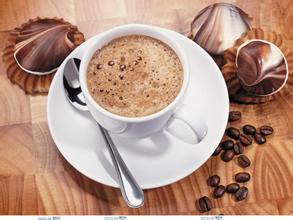Introduction of Peruvian Coffee Variety characteristics of Fine Coffee Bean Flavor Manor
In 1542, the Spanish royal family set up a governor's office in Lima and established the Viceroy of Peru, which became the center of Spanish colonial rule in South America. Peruvian commerce was flourishing at that time, merchants controlled most of South America's import and export trade, and precious metals and other materials plundered by the Spanish from South America were shipped out of Peru. The colonists occupied land in Peru, forced the implementation of the "Mitar System", forced the Indians to engage in slave labor in the mines, resulting in a large number of deaths of Indians. There were several Indian uprisings against Spanish colonial rule, the largest of which were the Manco Uprising of 1535, Juan Santos Uprising of 1742, and Tupac Amaru Uprising of 1780 - 1781.
Independence was declared on July 28, 1821, establishing the Republic of Peru. On October 28, 1835, Bolivia and Peru were formally united under the name Peruvian-Bolivian Confederation. On February 20, 1839, the Confederacy collapsed. Slavery was abolished in 1854. From 1879 to 1883, Peru joined Bolivia and Chile in the South American Pacific War for saltpeter production. After Peru's defeat, Chile seized the world's largest saltpeter producing province of Tarapaca and controlled Peru's Tacna and Alika provinces.
After peace negotiations in 1929, Peru recovered Tacna Province. In 1933, a border war with Colombia took place, and Peru was defeated. In October 1948, Audria launched a military coup to power. In June 1963, Belond Terry of the People's Action Party was elected president. On October 3, 1968, Velasco became president after a coup d'état. General Morales took power on August 29, 1975, and declared "return to the people" in 1977. Democratic elections were held in 1980 to restore civilian government. From 1990 to 2000, Fujimori (Japanese), leader of the "Reform 90", served two terms as president, resigning in exile in Japan in November 2000. From 2001 to 2006, Toledo, leader of Peru Viable, was president. From 2006 to 2011, Garcia, leader of the Apura Party, served as president. On July 28, 2011, President Humala of the Nationalist Party took office for a five-year term.
Flavor and taste characteristics: good balance, acidity palatable, can be used for mixed drinks,
Peruvian coffee cultivation history is not long, but as a rising star, Peruvian coffee is gradually opening up its popularity and entering the international market.
Peru is located in the west of South America, with a coastline of 2254 kilometers. The Andes runs through the north and south, and the mountains account for 1/3 of the country's area. They belong to the tropical desert area and have a dry and mild climate. Peruvian coffee is mostly grown at the foot of the Andes, where it is rich in quality traditional Central American coffee beans.
Peruvian coffee beans are most famous for coffee beans produced in Chancha Mayo in the middle and Cuzco in the south. In addition, there are also some areas in northern Peru that produce organic coffee. Organic coffee is made from beans grown in the shade. Although the method of growing coffee beans under shade makes the yield not high, the quality can reach the level of gourmet coffee. This is because shade under trees slows the ripening of coffee trees, helps coffee to grow fully, makes it contain more natural ingredients, fosters better flavors, and reduces caffeine content.
How about Peruvian coffee beans and Peruvian organic coffee? Teacher Wen Peruvian Coffee Introduction w.kaf.name
Peru's coffee cultivation is planned, which greatly increases coffee production. Peruvian coffee tastes mellow, acidity is appropriate, this tepid coffee attitude has made more and more people like it. Peruvian coffee has long been used as one of the blend beans for coffee stability, its rich acidity and mellow smoothness being its most striking characteristics. Peruvian coffee has a mild acidity, medium texture, good taste and aroma, and is an indispensable ingredient in making mixed coffee. Excellent Peruvian coffee, rich aroma, smooth taste, structured, rich sweet, and contains elegant mild acidity, will quietly wake up your taste buds.
Peru
Peru is also a major coffee producer. As much as 98 per cent of Peruvian coffee is grown in forested areas, and most producers are smallholders. The coffee is well balanced and can be used in mixed drinks.
Peru has good economic conditions and a stable political situation, thus ensuring the excellent quality of coffee. In the mid-1970s, Peruvian coffee production was about 900,000 bags a year, and then steadily increased to about 1.3 million bags a year. Although there are private exporters buying coffee from remote areas through middlemen, major markets remain monopolized by the Government. Later, the private Comera de Exportadores de Café del Peru (Peruvian Chamber of Coffee Exporters) was established, dedicated to the improvement of coffee quality, its primary task being to establish standards and eliminate inferior products, thus creating an atmosphere in which quality is paramount. This positive move bodes well for the future of the coffee industry. Later, rising prices encouraged farmers to grow coffee instead of cocoa, the region's traditional cash crop

Important Notice :
前街咖啡 FrontStreet Coffee has moved to new addredd:
FrontStreet Coffee Address: 315,Donghua East Road,GuangZhou
Tel:020 38364473
- Prev

Tanzania coffee boutique coffee beans introduce flavor and taste manors in producing areas
Wheat: the national average annual output of wheat is 70, 000 tons, and the largest wheat production unit is the HANNANG wheat complex, which is composed of several farms with a total planting area of 4000 hectares. These farms are located in the Hannang district of Arusha and are all autonomous subsidiaries of NAFCO. In the 1970s, NAFCO developed and operated these with the help of the Canadian International Development Agency (CIDA).
- Next

Cuba Crystal Mountain Coffee Variety Production Characteristics Fine Coffee Bean Flavor Taste Introduction
It covers an area of 109884 square kilometers,[3] of which Cuba Island is 104,555.61 square kilometers and the surrounding islands and reefs are 3,126.43 square kilometers. Cuba is located in the northwest Caribbean Sea, facing Haiti to the east, 140 kilometers south of Jamaica and 217 kilometers north of the top of the Florida Peninsula. Cuba consists of more than 1600 islands such as Cuba Island and Youth Island (formerly Pine Island), which is the West Indies.
Related
- Detailed explanation of Jadeite planting Land in Panamanian Jadeite Manor introduction to the grading system of Jadeite competitive bidding, Red bid, Green bid and Rose Summer
- Story of Coffee planting in Brenka region of Costa Rica Stonehenge Manor anaerobic heavy honey treatment of flavor mouth
- What's on the barrel of Blue Mountain Coffee beans?
- Can American coffee also pull flowers? How to use hot American style to pull out a good-looking pattern?
- Can you make a cold extract with coffee beans? What is the right proportion for cold-extracted coffee formula?
- Indonesian PWN Gold Mandrine Coffee Origin Features Flavor How to Chong? Mandolin coffee is American.
- A brief introduction to the flavor characteristics of Brazilian yellow bourbon coffee beans
- What is the effect of different water quality on the flavor of cold-extracted coffee? What kind of water is best for brewing coffee?
- Why do you think of Rose Summer whenever you mention Panamanian coffee?
- Introduction to the characteristics of authentic blue mountain coffee bean producing areas? What is the CIB Coffee Authority in Jamaica?

